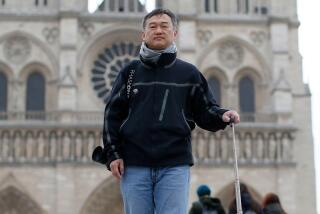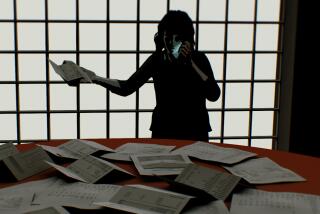Stolen camera points the way back to where it belongs
It was something of a Kodak moment for Dr. Jeffrey Plotkin when his stolen camera suddenly began transmitting pictures to his computer again.
Except that the $700 camera was a digital 3-D device produced by Fujifilm Corp. — not by the Eastman Kodak Co.
Apparently unbeknownst to the thief who swiped it from Plotkin’s Canoga Park chiropractic office in March, the camera was equipped with an Eye-Fi memory card. The device downloads photos directly into Plotkin’s computer without a connecting cord.
Two months after the thief struck, the camera suddenly began sending photos. After 11 pictures popped up on his screen — of the thief’s friends, it appeared — Plotkin sent copies to Los Angeles police in hopes that detectives could identify anyone. But suddenly, the photo stream died.
Plotkin deduced that the camera’s proprietary lithium-ion battery had died and the thief had no way of recharging it. But just in case the battery came back to life on its own, he activated a geo-tracking feature on its memory card.
Days after The Times published an Aug. 15 story about the theft and the mystery pictures, a new batch of photos appeared on Plotkin’s screen. The tags showed that pictures had been taken at a Van Nuys house. The location was marked on a Google Earth satellite photo.
When Los Angeles Police Det. Foster Rains knocked on the home’s door, its occupants denied knowledge of the camera. After Rains showed them the three latest photos, they acknowledged they had it — but claimed they had obtained it from a person at a barbershop.
No arrests were made. But Plotkin has his camera back.
And how did the dead battery come back to life? “It turned out they had bought a new battery charger for it online,” Plotkin said.
More to Read
Sign up for Essential California
The most important California stories and recommendations in your inbox every morning.
You may occasionally receive promotional content from the Los Angeles Times.











